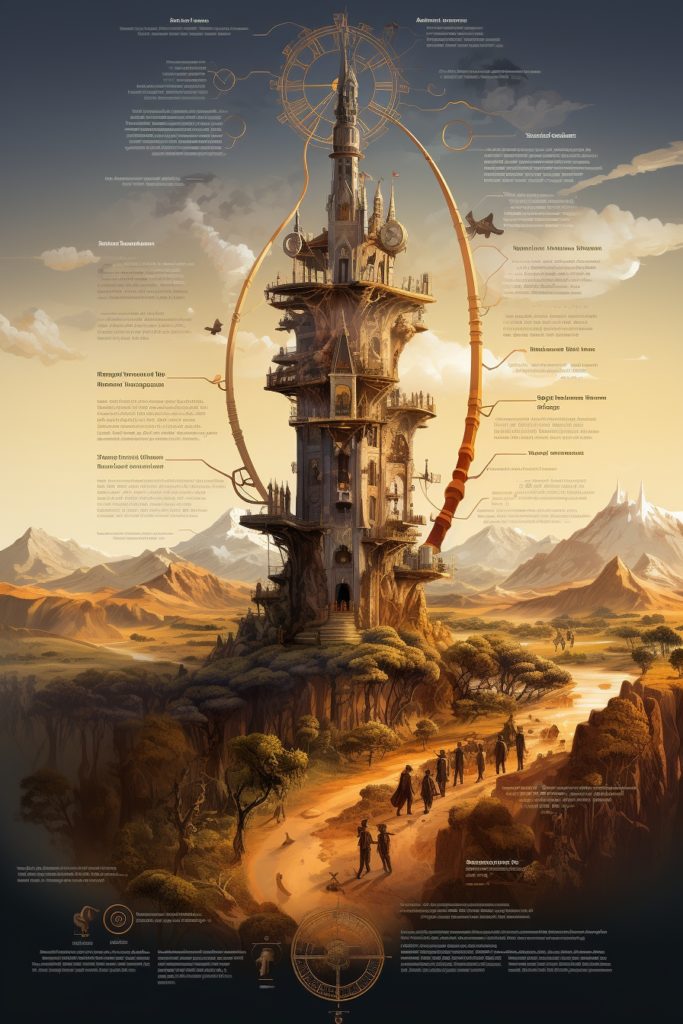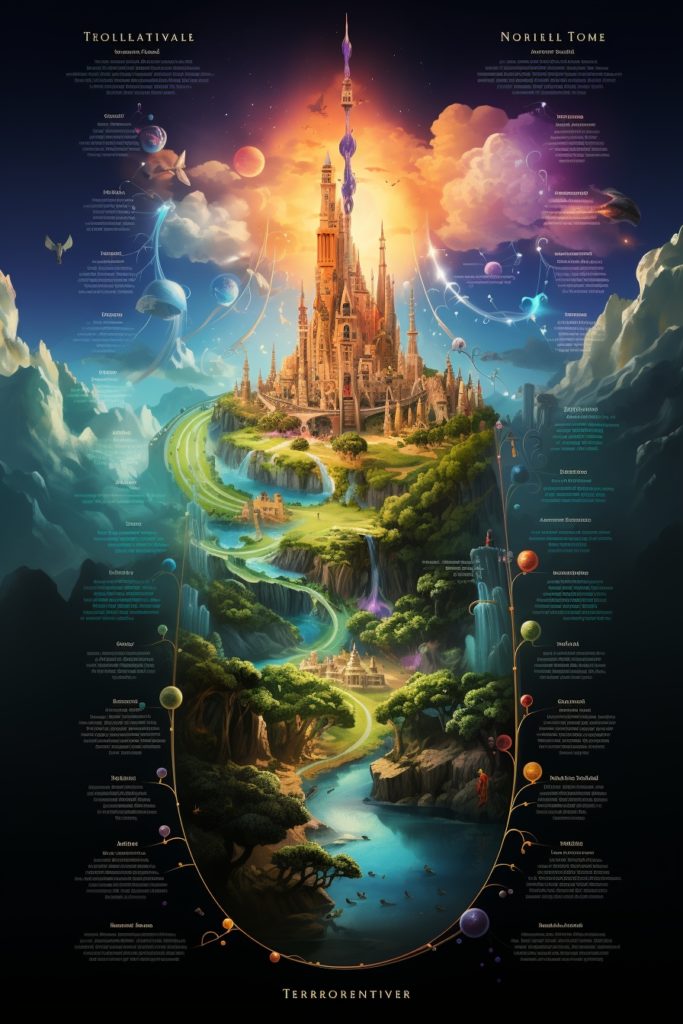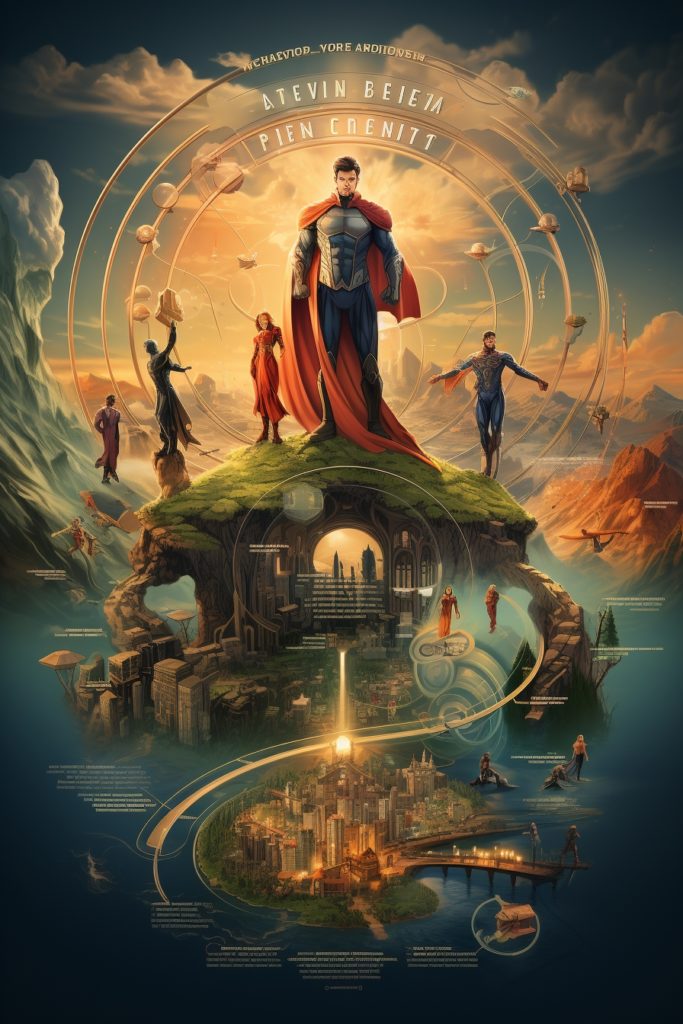
Ah, the novel series. A towering mountain of story arcs, characters, and subplots, and you, fellow writer, are the architect behind it all. It’s a lot to keep track of, but you don’t have to keep it all in your head, or even just in your fiction. When you’re juggling multiple storylines that span across different books, timelines can get muddier than a rain-soaked wild west road. That’s why you need a novel series timeline, your go-to roadmap for keeping track of every essential detail. Let’s explore how you can create and manage your own timeline like a pro.
The Whys and Wherefores of a Novel Series Timeline

A timeline is not just a fancy tool for procrastination, and believe me, I understand how it can feel like that. I just finished getting all the major, and many minor, events from my trilogy, The Adventures of Bodacious Creed, into a tineline on my World Anvil site for my fictional world, the Creedverse. And now, I feel prepared to continue with the fourth book set in that world. Yes, I put off writing the novel for a bit to get this done.
This is your weapon to fight against continuity errors and plot holes. We’ve all scoffed at that glaring mistake in a book series where the hero somehow has two different birthdays. With a well-crafted timeline, you dodge these blunders. Your timeline will become the spine of your series, ensuring consistency and adding layers to your storytelling. Trust me, your readers will thank you, and you can weave your events together confidently.
A Timeline is Not an Outline
If you’re the sort of writer who creates a comprehensive outline and sticks to it, then you may be able to put the major events, and exactly when they happen, into your timeline before you even start the first book. However, you may be a pantser and figure your plot out on the fly. Or, you may be like me, an outliner who figures out the between sections as the writing unfolds and sometimes modifies the outline.
I add events to my timeline after a book is finished, edited, and ready to publish (or, that’s what I’ll do going forward!). That way the events are set. Then, when I write future books, I can refer to my timeline when I reference when an event happened. In some cases, you may create a narrative that takes place at the same time as a former novel, and your timeline will help ensure you don’t contradict anything that you wrote about before, and even link events that happened around the same time.
For example, in my novels, Bodacious Creed and the Jade Lake, and Bodacious Creed and the San Francisco Syndicate, it’s revealed that a character in Santa Cruz has been dealing with some difficult circumstances, but they’re not specified. Also, she visits San Francisco a few times. Now, I’m writing the novel in which those events take place, Anna, Daughter of Creed, and I need to make sure they line up with the other books.
Chronological vs. Narrative Order
 Alright, here comes a big decision—when crafting a novel series timeline, will yours follow the chronological order of events, or the order they’re revealed in the narrative? Each has its own pros and cons. A chronological timeline keeps everything neat and tidy, but a narrative timeline can help you track pacing and tension. It might be helpful to maintain both; this way, you understand not just what happens, but also how it’s presented to the reader. Double the timelines, double the insights!
Alright, here comes a big decision—when crafting a novel series timeline, will yours follow the chronological order of events, or the order they’re revealed in the narrative? Each has its own pros and cons. A chronological timeline keeps everything neat and tidy, but a narrative timeline can help you track pacing and tension. It might be helpful to maintain both; this way, you understand not just what happens, but also how it’s presented to the reader. Double the timelines, double the insights!
While, in your novel, you may want to skip around the timeline for the best narrative, I recommend keeping your timeline chronological.
Tagging Your Entries
I recommend tagging your timeline entries, too. In the timeline for the Creedverse, I do this. At the bottom of each entry, I tag it based on the book or short story in which the event takes place. For example, “In: BC1,” for Bodacious Creed: a Steampunk Zombie Western, or “In: TOE,” for The Obstructed Engine. (You can read that short story for free, by the way. Check the sidebar of this blog!)
Timeline Software Tools
I highly recommend using World Anvil not just for your timeline, but for your entire series bible. You can sign up for free, and even create a world. On the free tier, your world will be public, so to keep information private, get a paid subscription. The prices are very reasonable. I have one of the highest levels and it’s less than $10 a month. Plus, the awesome folks who run World Anvil are helpful and absolutely dedicated to making the site as great as it can be for writers and game masters.
Revise, Revise, Revise: The Never-Ending Cycle
As you write new stories in your world, keep adding them to your timeline. It’s also Okay to edit it if you realize you made a mistake, if you’d like to add information, or you’d like to add a feature within the text, like the tags I use.
The Holy Grail: Consistency
 Let’s get something straight: consistency is your best friend when writing a series. A timeline enables you to track every nuance, from character birthdays to the phases of the moon, should that be important in your world. It’s all too easy for small inconsistencies to creep in when you’re writing multiple books over several years. Your timeline becomes your reference point, ensuring that every detail aligns from one book to the next. As you’re writing, when you want to remember exactly when something happened, you can check your timeline instead of riffling through your prior books.
Let’s get something straight: consistency is your best friend when writing a series. A timeline enables you to track every nuance, from character birthdays to the phases of the moon, should that be important in your world. It’s all too easy for small inconsistencies to creep in when you’re writing multiple books over several years. Your timeline becomes your reference point, ensuring that every detail aligns from one book to the next. As you’re writing, when you want to remember exactly when something happened, you can check your timeline instead of riffling through your prior books.
The Series that Maps Together, Stays Together
And there you have it, fellow scribes, the secrets to crafting a novel series timeline. Yours is more than just a useful tool—it’s an indispensable asset that can make or break the coherence of your work. So go forth, map out your series, and may your timelines be ever accurate!
Alright, I’ve dished out my two cents. Take these nuggets of wisdom and craft your timeline. Once you’ve got it down, not only will you breathe easier, but you’ll also find that your series comes together in a way that’s both satisfying for you and your readers. Happy writing!
“This tremendous world I have inside of me. How to free myself, and this world, without tearing myself to pieces. And rather tear myself to a thousand pieces than be buried with this world within me.” ~